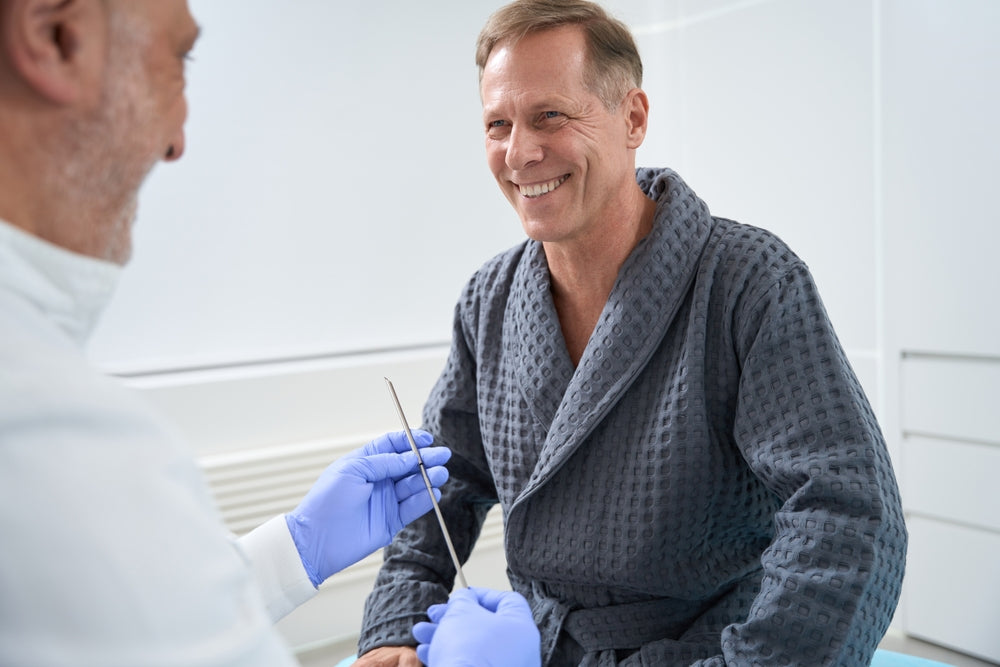
Hormones play an important role in the normal biological function of men and women. However, hormone production tends to slow later in life, causing unwanted and uncomfortable symptoms.
Replacement therapies can help alleviate these issues and are an effective solution for many patients. Here’s what to know about HRT, TRT, and the importance of quality hormone delivery supplies from a reliable provider.
Hormone replacement therapy (HRT) involves supplementing the estrogen and progesterone a woman's body no longer makes following menopause. Although there are many other hormones, the term “HRT” is generally exclusive to treatment for women.
There are two types of HRT – estrogen-only and combination estrogen/progesterone treatment. Combination treatment is typically used for women who have intact ovaries, while estrogen-only supplementation is reserved for women who have undergone a hysterectomy and no longer have ovaries to produce the hormones they need.
Hormone replacement therapy is typically used totreat menopausal symptoms like:
Low mood
Irritability
Skin dryness
Adult acne
Increased or new onset anxiety
Trouble sleeping
Pain during sexual intercourse
Vaginal dryness
Night sweats
Hot flashes
Weight gain
Estrogen and progesterone can be administered a variety of ways, including:
Oral tablets taken by mouth at the same time every day
Intramuscular injections administered in a doctor’s office
Apellet implant under the skin that releases hormones slowly over a period of time
A patch placed on top of the skin that also releases hormones over time
Gels, sprays, and other topical ointments that can be applied to the skin
Insertable rings or suppositories placed in the vagina behind the cervix
The best route of administration depends on the patient and their physician’s recommendations.
While hormone replacement therapy is generally considered safe and well-tolerated by most people, there are some uncommon risks and potentialside effects to be aware of, like:
Headaches
Nausea and vomiting
Breast tenderness
Itchy skin
Rash
Vaginal spotting or bleeding
Mood swings
Depression
Leg cramps
Hair loss
Diarrhea
Fatigue
Dizziness
Adult acne
In rare cases, HRT may be associated with a minor increase in the risk of blood clots, deep vein thrombosis, and breast cancer. In most cases, however, the benefits of hormone replacement outweigh the risks.
Testosterone replacement therapy (TRT) is sometimes called androgen replacement therapy and involves the supplementation of testosterone for men with low testosterone levels and some post-menopausal women with low sexual desire.
There are two types of testosterone that can be used for TRT –synthetic and bioidentical testosterone. Synthetic hormones are usually obtained from animal hormones and have bovine, porcine, or other sources. While this isn't exactly the same as human testosterone, they are considered close enough to be equally as effective.
Bioidentical hormones are obtained from other natural sources like soy and are designed to replicate the same chemical composition of hormones that are organically made by the body. Benefits of bioidentical hormone therapy can include:
Improved testosterone levels
Reduced genital dryness
Heightened sex drive
Lowered the risk of osteoporosis
Improved muscle mass in men
Reduced erectile dysfunction
Improved energy levels
Increased sleep quality
Decreased night sweats and hot flashes
Reduced brain fog
Increased libido
Typically, testosterone replacement therapy is used for men who are experiencing testosterone deficiency who are also showing signs of hypogonadism like reduced libido, lower stamina during sex, fatigue, high cholesterol, diminished penile sensitivity, or the inability to attain orgasm. This is called andropause and is like a “malemenopause.”
Signs of andropause in men include:
Irritability
Rapid mood swings
Exercise intolerance
Muscle atrophy
Fatigue
Lack of enthusiasm
Gynecomastia (male breasts)
Increased abdominal fat
Insomnia
Difficulty concentrating
Short-term memory loss
To receive TRT, males must have a blood test that shows testosterone levels below 300 nanograms per deciliter along with disruptive symptoms.
There are multiple ways that testosterone can be administered, including:
Patches
Gels
Creams
Oral tablets
Injections
Lozenges
With topical solutions, care must be used to prevent contact with other people, since they could also absorb the medicine through their skin. This makes injectable and implantable testosterone treatments a better option for many people who prefer to avoid this concern.
Like with all medical procedures and medications, TRT has a few risks and potential side effects to know about, including:
Worsened prostate cancer
Decreased prostate volume
Male breast cancer
Obstructive sleep apnea
Polycythemia
Benign prostatic hyperplasia
Liver toxicity
Oily skin
Bloating
Changes in urination
High red blood cell counts
Mood swings
Hair loss
Sperm count reduction
Increased irritability and aggression
Swelling of the ankles and feet
Most serious side effects associated with TRT can be caught early and treated with regular blood tests to check testosterone levels, prostate cancer markers, red blood cells, and liver enzymes. With proper management, TRT can be life-changing for people who are suffering from the uncomfortable or debilitating symptoms of hormone loss.
Most of the time, when physicians refer to HRT, they mean estrogen and progesterone replacement therapy for women. When referring to TRT, they typically mean testosterone supplementation for men. The purpose of both treatments is to restore the body’s natural hormone levels while reducing the presence of side effects from either low hormones or the treatment itself.
Trocar Supplies has been a trusted provider of HRT and TRT pellet insertion tools since 2006 and is proud to offer reliable, cost-effective solutions for physicians across the world. Our kits are registered in the United States, Brazil, and Argentina, and we go the extra mile to ensure you receive tools that are specially customized to suit your needs.
Order your reusable or disposable trocar kits today or contact us at (937) 478-0469 for answers to your important questions about pricing, kit options, and more. You can also browse our product catalog or request a custom kit here.